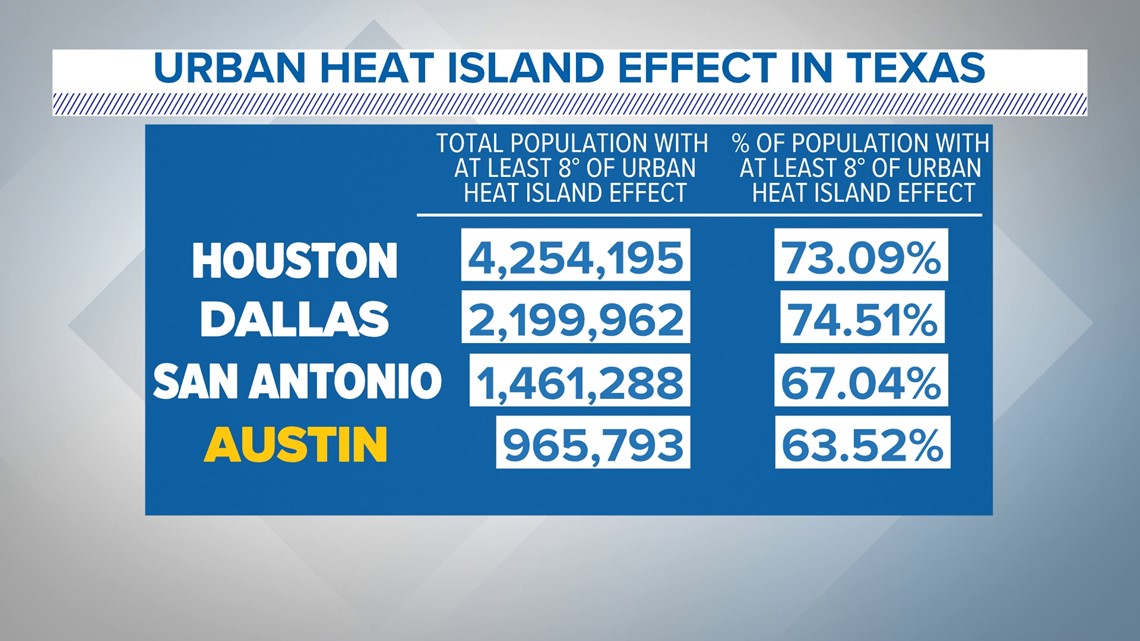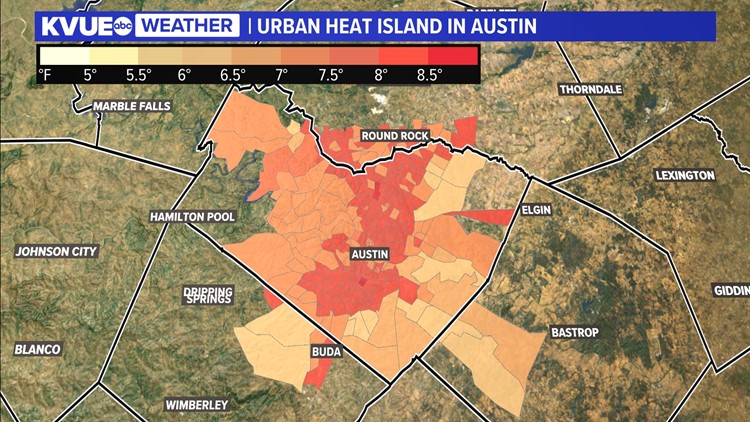AUSTIN, Texas — As Austin sails through what is likely to become the hottest July on record, the last thing we want to hear about is an increase in temperatures. Unfortunately, new data from Climate Central is shedding light on the impact of the "urban heat island" effect in Austin and the extent to which it could be boosting our temperatures.
Let's start with what exactly the urban heat island effect means. It simply refers to the warming impact of urban infrastructure in cities compared to nearby rural areas.
The concrete, roads, buildings and other elements of urban sprawl absorb and hold in heat. This results in warmer temperatures in urban areas relative to rural locations that are simply covered by grass, trees and other vegetation.


New analysis shows four of the top 10 cities with the largest populations that experience at least 8 degrees of urban heat island effect are located in Texas. Using these criteria, leading the pack in Texas is Houston (2nd nationally), followed by Dallas (4th nationally), San Antonio (6th nationally) and then Austin (10th nationally).
However, there are a variety of metrics to assess the impact of the urban heat island effect that drastically impact the national rankings.
For example, the numbers look different when using a citywide average of urban heat island warming. Using these criteria, Houston and Dallas experience on average 7.9 degrees of warming, which is tied for 13th nationally. San Antonio and Austin experience on average 7.7 degrees of warming, which is tied for 20th nationally.


So, let's dive into the urban heat island impact just in the Austin metro area. The highest impact follows the urban sprawl associated with not just Downtown Austin, but much of the Interstate 35 corridor.
A large chunk of the metro population – nearly 64% – in this area is experiencing a warming effect of about 8 degrees. There is a small subset of the metro that includes about 4,000 people that experiences warming of 9 degrees or more, based on the urban heat island effect.


The impact of the urban heat island is felt not just in Travis County, but even into parts of Hays, Bastrop and Williamson counties.
It is important to note that the urban heat island effect is not solely responsible for the hot temperatures this July in Austin. The urban heat island heats up the weather in addition to warming from man-made climate change and, of course, the impact of the day-to-day weather patterns.
The KVUE Weather Team will continue to track the heat for you all summer long.



